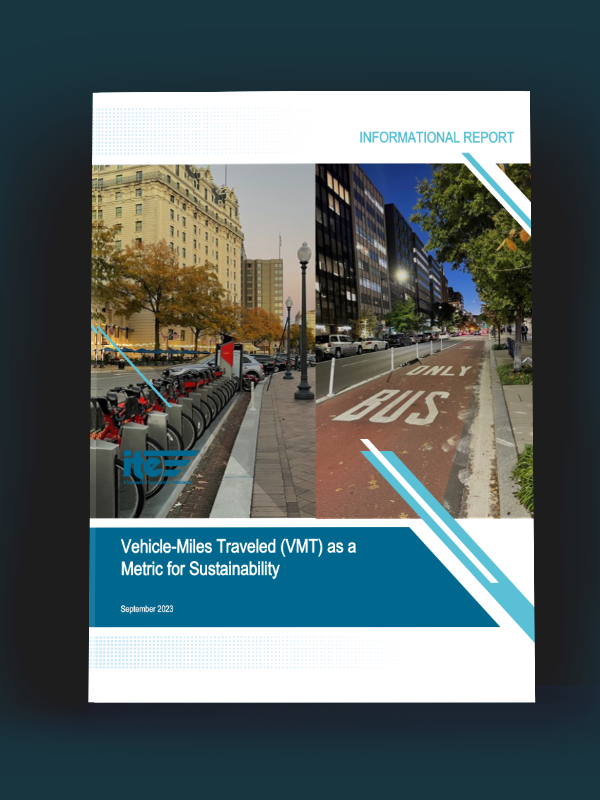Using VMT to Promote Sustainability
Using VMT to Promote Sustainability
As planning strategies evolve from vehicle-centric to a multimodal, accessibility-focused approach, the focus is on moving people efficiently over vehicles. The new paradigm emphasizes sustainable transportation modes and underscores the significance of Vehicle Miles Traveled (VMT) as a crucial metric. VMT reduction benefits traffic flow, infrastructure costs, community well-being, pollution reduction, non-driver accessibility, and public health.
We’re excited to introduce ITE’s new technical brief, Vehicle-Miles Traveled (VMT) as a Metric for Sustainability. This resource, which includes contributions from our nationwide VMT expert Ron Milam, covers the shift from vehicle-based planning to accessibility-based planning, providing insights and case studies for transportation agencies and practitioners striving to enhance equity, safety, environmental sustainability, and community livability.
share this article
Explore More
Wildfire Evacuation & CEQA: A Checklist for Navigating Impacts
Learn about and share input on a preliminary checklist being designed to evaluate the impacts of wildfire evacuations and determine necessary actions.
Celebrating Innovations from Our R&D Teams
Check out these examples of R&D innovations that are helping clients respond to changing transportation needs.
Wildfire Evacuation Checklist
This checklist includes seven categories—such as proximity to hazards, project density, demographics, and evacuation access—to help determine whether a proposed development may significantly impact wildfire evacuation efforts.




